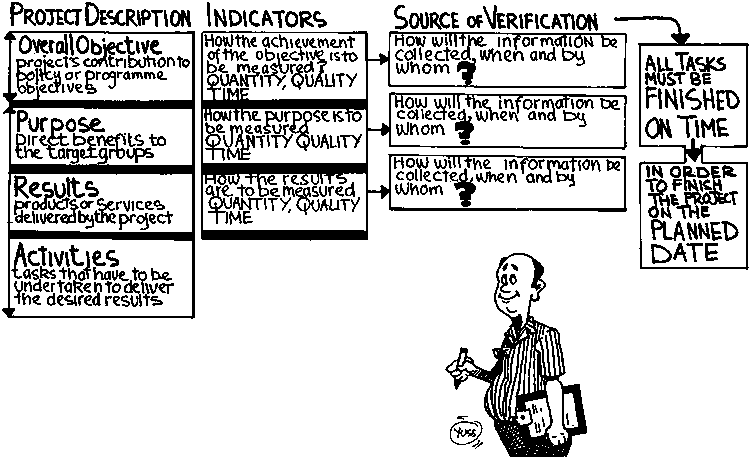
Monitoring the project is necessary at all stages of the project life cycle. Continuous monitoring ensures that deviations are detected and corrected in time, minimizing any negative impact on the project. To be truly effective, it should done in an open manner with broad stakeholder participation.
Monitoring is an ongoing process that should be done regularly at fixed intervals, and should focus on assessing implementation performance in several areas: client/user satisfaction, performance indicators evaluation, and ways to measure the effect of the system on profitability. Some of the indicators that could be used to measure performance are listed below:
Client/user satisfaction:
improvements in the accuracy of information received
Increase in frequency of information received
Increased speed in processing and reporting information
Improved format and presentation of information
Tasks completed, outputs generated and impacts
extent to which tasks and outputs listed in the work plan have been completed satisfactorily
other direct and indirect impacts produced by the project
Cost savings generated, impact on cooperative profitability, performance, etc.
Reduction in staff time required to collect, process, analyse and report information generated by the system
Improved response time in processing and handling product orders, delivery
Better control of stock
Improvement in member services
Introduction of new approaches to member capital formation
|
Monitoring and evaluation: key points
|
At the end of the computerization project, it is necessary to evaluate how successful the project was and if it satisfied its intended objectives, in order to inform other stakeholders, especially elected leaders, directors and members.
You do this by comparing the value of each indicator you have defined (such as the number of transactions, accuracy, speed, cost savings) before the software was implemented, and after it was implemented. You can also include predictions on future performance. The choice of indicators will depend to some extent on the business goal or objective of computerization.
For example, if the business objective was to reduce the time required to generate a trial balance and income statement, some indicators can be: improved transaction time, members’ satisfaction, monetary savings due to a better administration of assets, timely compliance with legal requirements.
Evaluations can be performed by members of the cooperative, but an external opinion is always helpful and adds objectivity to the reports.